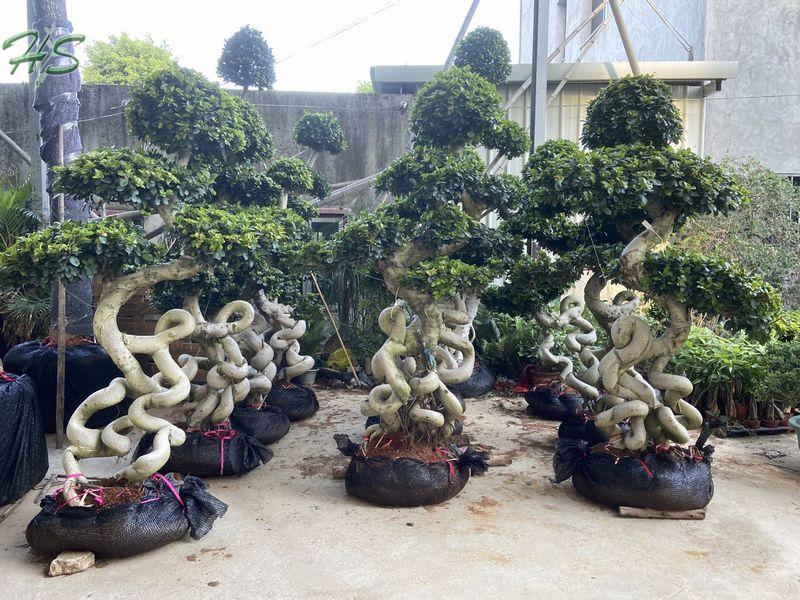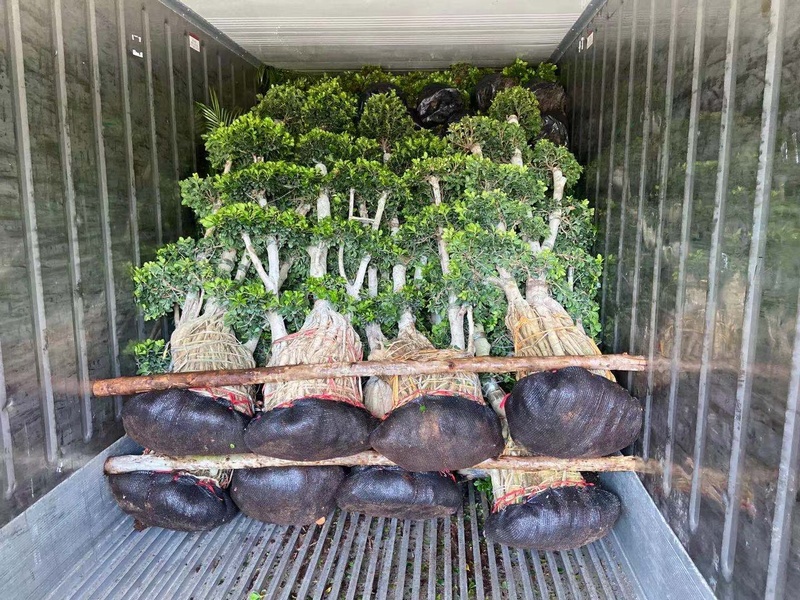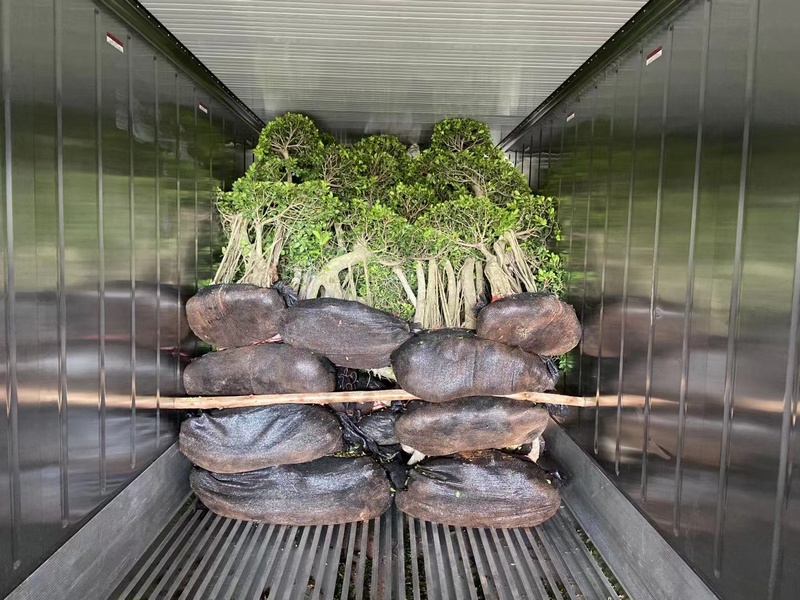The shima root bonsai Tree is a stunning example of the art of bonsai, with its gnarled trunk and verdant foliage. Its intricate root system and aged appearance give it a sense of dignity and history, making it a prized addition to any collection.
Item NO.:
HSDSPayment:
T/TProduct Origin:
ChinaColor:
GreenShipping Port:
Xiamen portLead Time:
7-10day
The Fujian Style Stone-Edge Banyan Bonsai: A Testament to Tenacity
The Fujian-style Stone-Edge Banyan Bonsai, crafted predominantly from the Small-leaved Fig (Ficus microcarpa), is not merely a potted plant; it is a profound artistic expression deeply rooted in the horticultural traditions of Southern China. This style is celebrated for its dramatic, naturalistic beauty and its powerful embodiment of resilience and harmony.
The Core Concept: Sekijoju (Root-Over-Rock)
At the heart of this style lies the ancient bonsai technique of Sekijoju, or "root-over-rock." The artistry involves training the tree's extensive and vigorous root system to grow over, clasp, and ultimately engulf a carefully selected stone. This stone is not a mere accessory but a central character in the composition. It represents the harsh, unyielding challenges of the natural world, reminiscent of the rocky cliffs and granite outcrops found in Fujian's landscape where wild banyans thrive.
The Star Performer: The Small-leaved Fig (Ficus microcarpa)
The choice of the Small-leaved Fig is deliberate and essential to the style's success. This species is ideal for bonsai for several reasons:
Robust Root System: It produces strong, flexible aerial roots that can be easily trained to grip the stone.
Tiny Leaves: The small, glossy, dark green leaves scale perfectly to the miniature landscape, creating a sense of age and proportion.
High Budding Ability: It readily back-buds, allowing the artist to develop a dense, compact canopy through meticulous pruning.
Resilience: It is a hardy tree, tolerant of the rigorous training and pruning required to create this living sculpture.
Aesthetic Hallmarks of the Fujian Style:
The Gripping Roots: The most striking feature is the network of roots. They are trained to look like powerful, sinewy veins clutching the rock. Over years, these roots thicken and fuse with the stone, creating an inseparable bond that conveys immense age and stability.
The Lush, Cloud-like Canopy: The foliage is painstakingly pruned and shaped into a series of dense, contoured pads, often described as "clouds" or layers. This refined canopy contrasts beautifully with the raw, rugged texture of the roots and stone, showcasing the balance between nature's untamed force and human artistry.
A Complete Miniature Landscape: A masterfully created Stone-Edge Banyan is more than a tree on a rock; it is a self-contained world. It tells a story of a relentless struggle for life, where the tree draws nourishment from the meager soil at the base, triumphing over its stony foundation.
Cultural and Philosophical Significance
In Chinese culture, the banyan tree is a symbol of longevity, endurance, and communal strength (as one tree can create a forest through its roots). The Fujian Stone-Edge Banyan Bonsai amplifies this symbolism. It is a living metaphor for perseverance—the ability to adapt, cling on, and flourish despite adversity. It represents the harmonious coexistence of strength (the stone) and life (the tree).
Caring for such a bonsai is a contemplative practice. It requires patience, a careful eye for watering, pruning, and root management, and a deep appreciation for its slow, graceful evolution.
In conclusion, the Fujian-style Stone-Edge Small-leaved Fig Bonsai is a pinnacle of bonsai art. It is a dynamic sculpture that captures a moment in an epic, century-spanning story, offering a timeless lesson in strength, beauty, and resilience right in the palm of your hand.
Take care tips
|
Item name: |
Natural Aerial Root Ficus Microcarpa Bonsai Landscaping Tree For Garden |
|
Common name: |
Ficus tree, Monroe Ficus, Figs, Chinese Banyan, Strange ficus root, Ficus Bonsái |
|
Standard: |
Ficus microcarpa bonsai horse ficus aerial root for outdoor landscaping. |
|
Temperature: |
The best temperature for ficus growing is 18-35 ℃. In winter, the ficus will be frost when the temperature under 10 ℃. Shortage of sunshine will make the leaves yellow and undergrowth |
|
Water: |
We suggest feed ficus bonsai enough water is necessary. Soil should be always wet. In summer, leaves should be sprayed water as well. |
|
Sunlight: |
The ficus likes the full sunlight. |
|
Fertilizer: |
Liquid feed during active growth in late spring and summer. higher frequency watering while feeder to avoid drug injury. |
|
Packing: |
Packed with cocopeat and then into container |
|
Delivery time: |
7-14 days after confirmed for stock quantity |
Product Overview
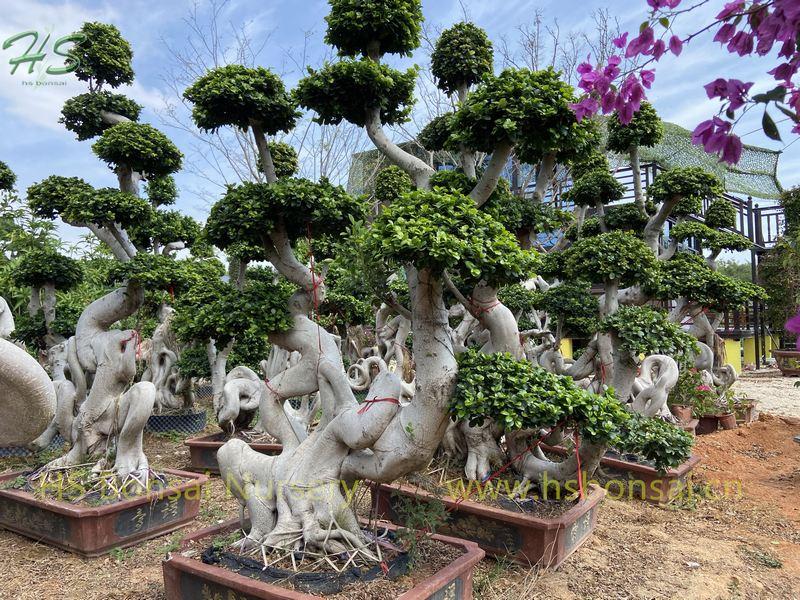
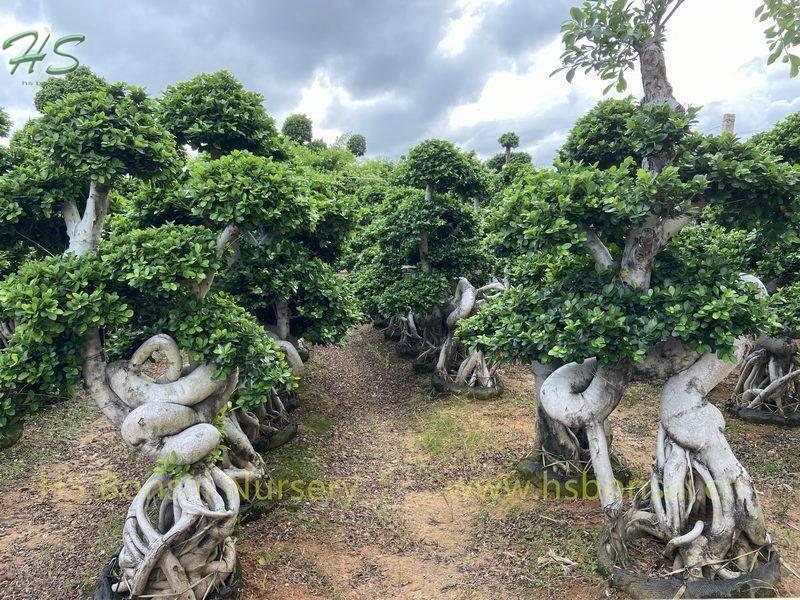
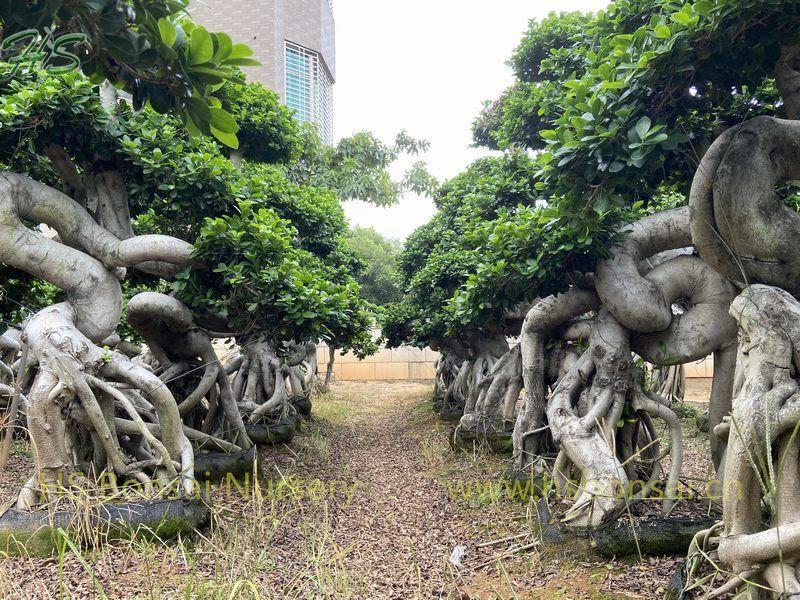
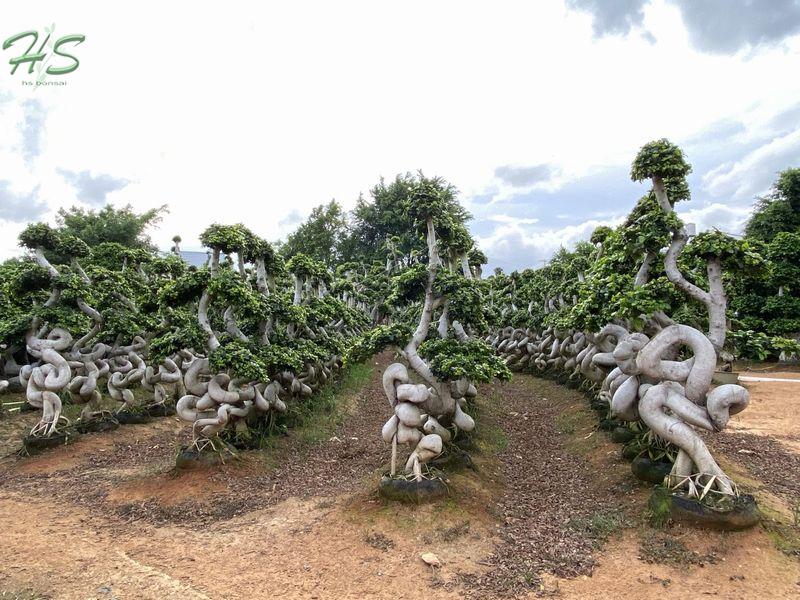
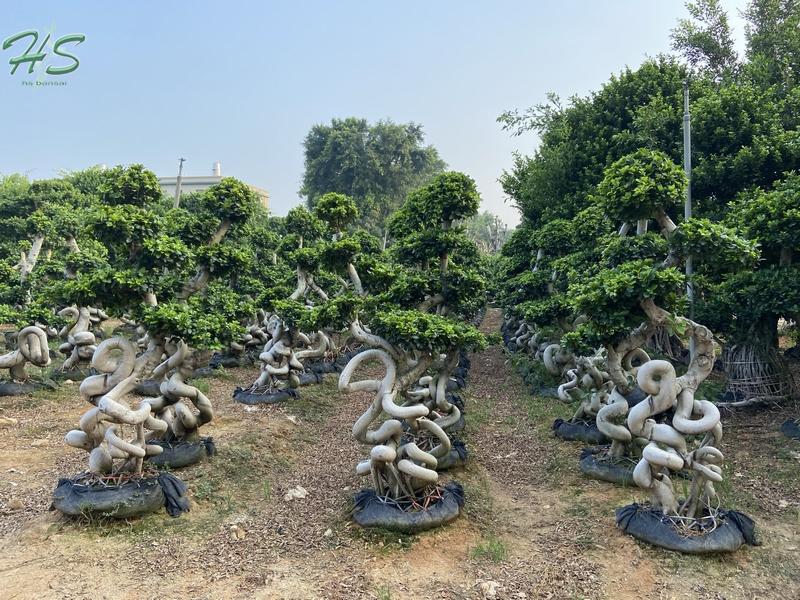
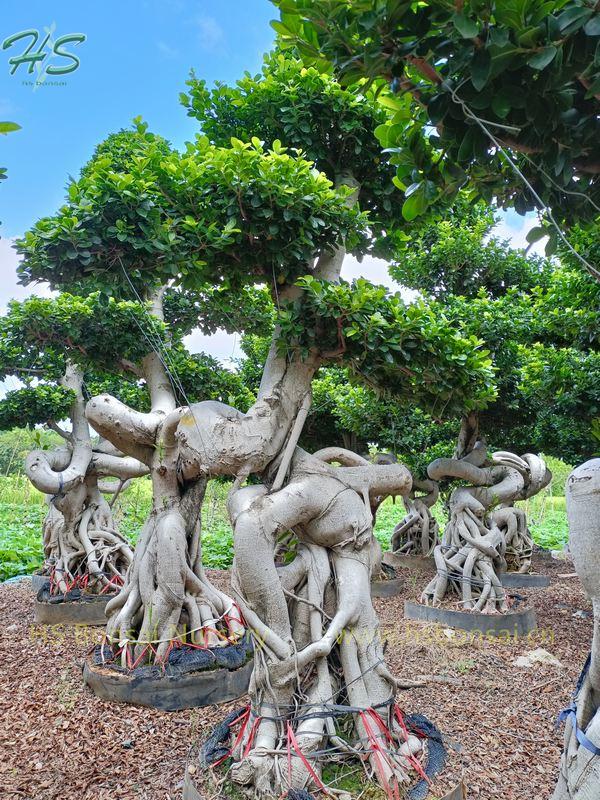
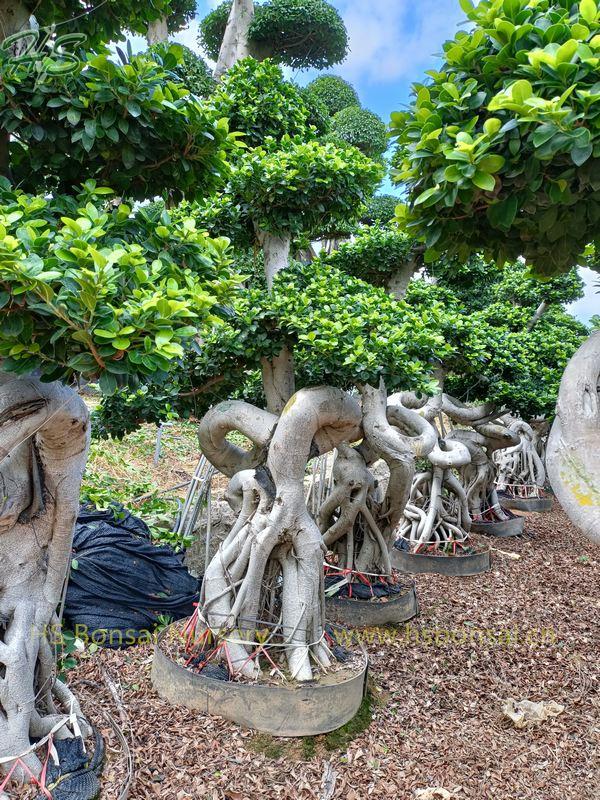
Loading Photos
